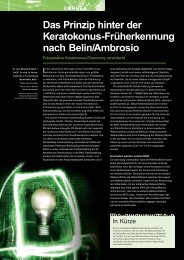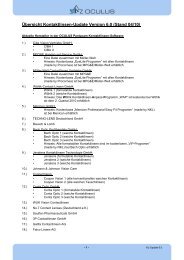DICOM Conformance Statement for Pentacam®, (1MB) - OCULUS ...
DICOM Conformance Statement for Pentacam®, (1MB) - OCULUS ...
DICOM Conformance Statement for Pentacam®, (1MB) - OCULUS ...
Create successful ePaper yourself
Turn your PDF publications into a flip-book with our unique Google optimized e-Paper software.
1 INTRODUCTION<br />
• Negotiation: first phase of Association establishment that allows Application Entities<br />
to agree on the types of data to be exchanged and how that data will be encoded.<br />
• Presentation Context: the set of <strong>DICOM</strong> network services used over an Association,<br />
as negotiated between Application Entities; includes Abstract Syntaxes and Transfer<br />
Syntaxes.<br />
• Protocol Data Unit (PDU): a packet (piece) of a <strong>DICOM</strong> message sent across the<br />
network. Devices must specify the maximum size packet they can receive <strong>for</strong> <strong>DICOM</strong><br />
messages.<br />
• Service Class Provider (SCP): role of an Application Entity that provides a <strong>DICOM</strong><br />
network service; typically, a server that per<strong>for</strong>ms operations requested by another<br />
Application Entity (Service Class User). Examples: Picture Archiving and Communication<br />
System (image storage SCP, and image query/retrieve SCP), Radiology In<strong>for</strong>mation<br />
System (modality worklist SCP).<br />
• Service Class User (SCU): role of an Application Entity that uses a <strong>DICOM</strong> network<br />
service; typically, a client. Examples: imaging modality (image storage SCU, and modality<br />
worklist SCU), imaging workstation (image query/retrieve SCU)<br />
• Service/Object Pair (SOP) Class: the specification of the network or media transfer<br />
(service) of a particular type of data (object); the fundamental unit of <strong>DICOM</strong> interoperability<br />
specification. Examples: Ultrasound Image Storage Service, Basic<br />
Grayscale Print Management.<br />
• Service/Object Pair (SOP) Instance: an in<strong>for</strong>mation object; a specific occurrence<br />
of in<strong>for</strong>mation exchanged in a SOP Class. Examples: a specific X-Ray image.<br />
• Tag: a 32-bit identifier <strong>for</strong> a data element, represented as a pair of four digit hexadecimal<br />
numbers, the “group” and the “element”. If the “group” number is odd, the<br />
tag is <strong>for</strong> a private (manufacturer-specific) data element. Examples: (0010,0020)<br />
[Patient ID], (07FE,0010) [Pixel Data], (0019,0210) [private data element]<br />
• Transfer Syntax: the encoding used <strong>for</strong> exchange of <strong>DICOM</strong> in<strong>for</strong>mation objects<br />
and messages. Examples: JPEG compressed (images), little endian explicit value representation.<br />
• Unique Identifier (UID): a globally unique “dotted decimal” string that identifies a<br />
specific object or a class of objects; an ISO-8824 Object Identifier. Examples: Study<br />
Instance UID, SOP Class UID, SOP Instance UID.<br />
• Value Representation (VR): the <strong>for</strong>mat type of an individual <strong>DICOM</strong> data element,<br />
such as text, an integer, a person’s name, or a code. <strong>DICOM</strong> in<strong>for</strong>mation objects can<br />
be transmitted with either explicit identification of the type of each data element<br />
(Explicit VR), or without explicit identification (Implicit VR); with Implicit VR, the receiving<br />
application must use a <strong>DICOM</strong> data dictionary to look up the <strong>for</strong>mat of each<br />
data element.<br />
<strong>DICOM</strong> <strong>Con<strong>for</strong>mance</strong> <strong>Statement</strong> Pentacam® / Pentacam HR® 3 / 26




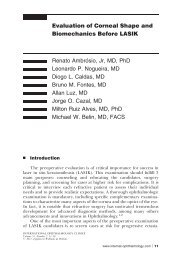
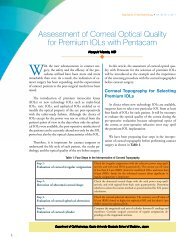
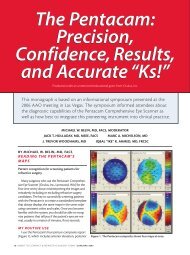
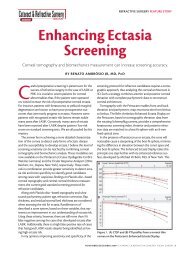
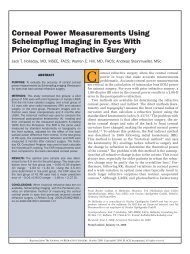
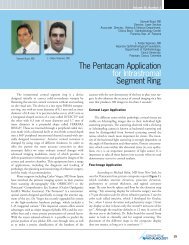
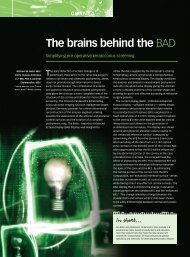
![Topography and Scheimpflug Imaging [112 KB] - Oculus](https://img.yumpu.com/22885820/1/190x255/topography-and-scheimpflug-imaging-112-kb-oculus.jpg?quality=85)
